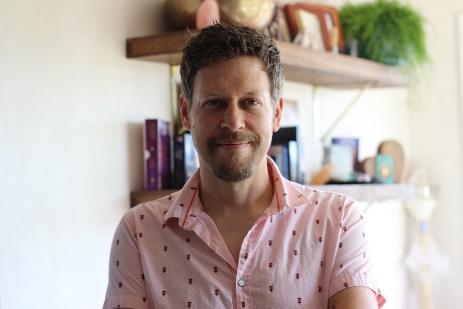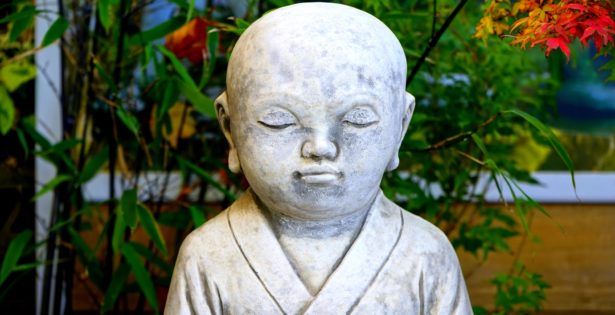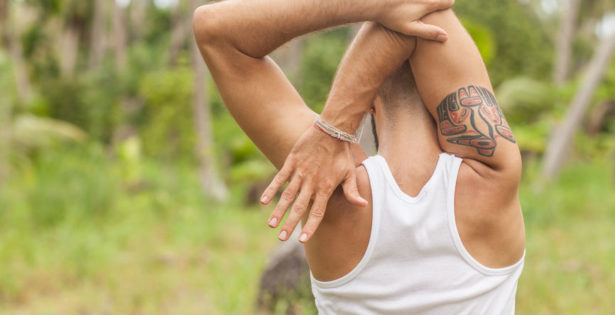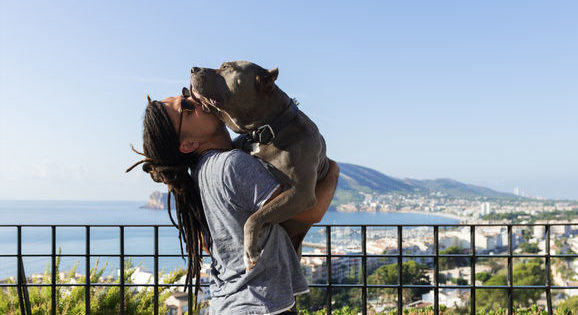WP_Query Object
(
[query] => Array
(
[category__in] => Array
(
[0] => 20
)
[post__not_in] => Array
(
[0] => 7201
)
[posts_per_page] => 50
[ignore_sticky_posts] => 1
[orderby] => desc
[_shuffle_and_pick] => 3
)
[query_vars] => Array
(
[category__in] => Array
(
[0] => 20
)
[post__not_in] => Array
(
[0] => 7201
)
[posts_per_page] => 50
[ignore_sticky_posts] => 1
[orderby] => desc
[_shuffle_and_pick] => 3
[error] =>
[m] =>
[p] => 0
[post_parent] =>
[subpost] =>
[subpost_id] =>
[attachment] =>
[attachment_id] => 0
[name] =>
[pagename] =>
[page_id] => 0
[second] =>
[minute] =>
[hour] =>
[day] => 0
[monthnum] => 0
[year] => 0
[w] => 0
[category_name] => pain-relief
[tag] =>
[cat] => 20
[tag_id] =>
[author] =>
[author_name] =>
[feed] =>
[tb] =>
[paged] => 0
[meta_key] =>
[meta_value] =>
[preview] =>
[s] =>
[sentence] =>
[title] =>
[fields] =>
[menu_order] =>
[embed] =>
[category__not_in] => Array
(
)
[category__and] => Array
(
)
[post__in] => Array
(
)
[post_name__in] => Array
(
)
[tag__in] => Array
(
)
[tag__not_in] => Array
(
)
[tag__and] => Array
(
)
[tag_slug__in] => Array
(
)
[tag_slug__and] => Array
(
)
[post_parent__in] => Array
(
)
[post_parent__not_in] => Array
(
)
[author__in] => Array
(
)
[author__not_in] => Array
(
)
[search_columns] => Array
(
)
[suppress_filters] =>
[cache_results] => 1
[update_post_term_cache] => 1
[update_menu_item_cache] =>
[lazy_load_term_meta] => 1
[update_post_meta_cache] => 1
[post_type] =>
[nopaging] =>
[comments_per_page] => 50
[no_found_rows] =>
[order] => DESC
)
[tax_query] => WP_Tax_Query Object
(
[queries] => Array
(
[0] => Array
(
[taxonomy] => category
[terms] => Array
(
[0] => 20
)
[field] => term_id
[operator] => IN
[include_children] =>
)
)
[relation] => AND
[table_aliases:protected] => Array
(
[0] => wp_term_relationships
)
[queried_terms] => Array
(
[category] => Array
(
[terms] => Array
(
[0] => 20
)
[field] => term_id
)
)
[primary_table] => wp_posts
[primary_id_column] => ID
)
[meta_query] => WP_Meta_Query Object
(
[queries] => Array
(
)
[relation] =>
[meta_table] =>
[meta_id_column] =>
[primary_table] =>
[primary_id_column] =>
[table_aliases:protected] => Array
(
)
[clauses:protected] => Array
(
)
[has_or_relation:protected] =>
)
[date_query] =>
[request] =>
SELECT SQL_CALC_FOUND_ROWS wp_posts.ID
FROM wp_posts LEFT JOIN wp_term_relationships ON (wp_posts.ID = wp_term_relationships.object_id)
WHERE 1=1 AND wp_posts.ID NOT IN (7201) AND (
wp_term_relationships.term_taxonomy_id IN (20)
) AND ((wp_posts.post_type = 'post' AND (wp_posts.post_status = 'publish' OR wp_posts.post_status = 'acf-disabled')))
AND ID NOT IN
(SELECT `post_id` FROM wp_postmeta
WHERE `meta_key` = '_pilotpress_level'
AND `meta_value` IN ('','employee')
AND `post_id` NOT IN
(SELECT `post_id` FROM wp_postmeta
WHERE `meta_key` = '_pilotpress_level'
AND `meta_value` IN ('' )))
GROUP BY wp_posts.ID
ORDER BY wp_posts.post_date DESC
LIMIT 0, 50
[posts] => Array
(
[0] => WP_Post Object
(
[ID] => 7822
[post_author] => 2
[post_date] => 2020-03-18 18:57:58
[post_date_gmt] => 2020-03-18 18:57:58
[post_content] =>
Dear Community,
We’ve closed our spas in Portland and Boulder in order to help flatten the curve (slow the emergence of new cases of coronavirus to lessen the impact.) We hope to be back open and sharing our healing gifts with you soon. In the meantime, here are some of the other ways we’re continuing to help without breathing on you.
Community Support
We invite you to join us on our Facebook group, Dragontree Community and Conversations. Briana and Peter will be going live in the group for March:
Mondays with Briana and Peter at 9:00 AM Pacific Time
| Noon Eastern
Wednesday with Briana at 11:00 AM Pacific
| 2:00 Eastern
Fridays with Peter at 8:00 AM Pacific
| 11 AM Eastern
Their intention is to foster community, connection, and on-going wisdom including immune support and meditations.
Join the DragonTree Community
Tele-Sessions with Dr. Peter Borten

Herbal Consultation: Traditional Chinese Medicine has been instrumental in China’s response to COVID-19. 85% of patients are receiving herbs. In one study of 102 patients, those receiving both Chinese herbs and Western medicine had a 33% higher recovery rate than those only receiving Western treatments. Chinese hospitals have established herbal protocols for prevention and every stage of treatment of the virus, and I’m following and modifying these guidelines for my patients. I’ve developed a prevention formula based on the Wuhan formula, which should help boost immune function.
Besides treating and preventing coronavirus, I craft customized herbal formulas (in powder form) for all health issues, including digestive disorders, allergies, depression, and anxiety, insomnia, fatigue, autoimmune diseases, etc. I’ve been studying and practicing herbal medicine for over 25 years and it works! Click here for an Herbal Tele-Consultation.
Healing Session: In these sessions, I use a variety of approaches to help you achieve optimal wellness, including Five Element psychology, guided acupoint tapping (EFT), lifestyle and nutritional counseling, and when appropriate, herbal formulas and/or supplements. Click here for a Healing Session.
Dr. Peter’s Herbal Formulas
Cold and Flu Support. Includes the best of what Chinese and Western herbal medicine have to offer to address all facets of cold and flu symptoms, while also strengthening the immune system. Click here to get Cold and Flu Support
Vitality Tonic. This powerful tonic is a highly sophisticated blend of 23 herbs (including Cordyceps mushroom, Ginseng, Millettia, and Morinda) that support healthy immunity, energy, and circulation. Click here to Get Vitality Tonic.
Anxiety Support. Made from 18 powerfully effective herbs such as: Bupleurum, Magnolia bark, Zizyphus, Rehmannia, and Passionflower to treat a full range of anxiety patterns. Click here to get Anxiety Support.
Sleep Support. Nothing supports the immune system like a good night’s sleep. If we could all go to bed at the first inkling of sickness, much of the time we wouldn’t even get sick. Click here to get Sleep Support.
Digestive Support. Alleviates digestive upset from a variety of causes including: food that you ate, travel sickness, stomach virus, and stress. Click here to get Digestive Support.
Stay tuned for an herbal immune support formula based on the Wuhan preventive formula.
Coaching Sessions
If you’re feeling anxious about current events or just want guidance in getting organized, making plans, achieving goals, healing old wounds, releasing baggage, or clarifying your vision, our life coaches can help. These graduates of The Dragontree Life Coaching training program are skilled and compassionate, and they’ll facilitate tangible, measurable positive changes in your life! Click here for more information.
What's next?
Over the next several weeks, we'll be sharing more ideas for supporting your mind, body, and spirit through this difficult time both here in your email and in our Community Facebook group.
We appreciate you joining us in community.
Much Love,
Briana, Peter, and everyone at The Dragontree
P.S
Catch a Re-play of Briana's Live, how to embrace the unknown and find your footing when there is no ground.
[post_title] => We’re Helping You Without Stepping Into Your 6-Foot Bubble
[post_excerpt] =>
[post_status] => publish
[comment_status] => open
[ping_status] => open
[post_password] =>
[post_name] => were-helping-you-without-stepping-into-your-6-foot-bubble
[to_ping] =>
[pinged] =>
[post_modified] => 2020-03-18 18:57:58
[post_modified_gmt] => 2020-03-18 18:57:58
[post_content_filtered] =>
[post_parent] => 0
[guid] => http://thedragontree.com/?p=7822
[menu_order] => 0
[post_type] => post
[post_mime_type] =>
[comment_count] => 0
[filter] => raw
[webinar_id] => 0
)
[1] => WP_Post Object
(
[ID] => 8949
[post_author] => 3
[post_date] => 2023-02-08 20:41:47
[post_date_gmt] => 2023-02-08 20:41:47
[post_content] =>
In my early 20s I had a boss who would ask me every morning, “How goes the battle?” I had never heard that expression before, but recognized that he meant, “How’s it going?” At the time I was learning about neuro-linguistic programming and becoming attuned to people’s word choices, so it struck me as an interesting – and loaded – phrase. Then I began to notice how common it is for people to characterize life as a fight – an ongoing series of conflicts, something we need to slog through, with a risk of imminent danger and an us-versus-them mentality.
Even if we see ourselves as winning the battle, if we hold this perspective, there’s still a chance of getting ambushed, right up to the last minute. So, we must always have our guard up, sleep with one eye open, check our drink for poison, and so on. It causes chronic stress, and we’re never entirely free.
Meanwhile, there are people who see life in a more positive light – as a game, a gift, an opportunity to explore, connect, experience, and be of service. Are they naïve? Are they less successful? Are they blindsided by the unexpected? I don’t believe so. If anything, because their perspective isn’t innately stress-inducing, they have greater resources for adapting to whatever comes.
I encourage you to examine your relationship with the world. How would you sum up your story? What kind of words do you use, both to others and yourself, when you talk and think about your challenges and ambitions? How do you feel about others aiming for the same goals as you? What sorts of bodily feelings go along with this? For extra support in re-wiring yourself, check out our workbook, Freedom, and try doing it for a month.
If you do find that you’re harboring a “battle” mentality, I wonder if it’s possible for you to symbolically wave the white flag, saying to the world (and yourself), “I’m not at war with you.” I know the stakes feel very high sometimes, but what if. . . (1) you could clearly see that being in ongoing conflict is more detrimental than it is beneficial to you, and (2) you had an unwavering link to something you could trust, an assurance that you are fundamentally okay, no matter what.
We often speak of rousing our inner warrior and the term “warrior” comes up a lot in self-help books. The warrior archetype is deep in our collective consciousness. Everyone knows it. And there’s a good side to it. Often, we evoke the warrior archetype when we wish to inspire ourselves to be clear, sharp, and disciplined, to stand up for our values, to protect those in need, to be brave, to have integrity and honor. But the other side of being a warrior is, of course, that you’re at war.
How can we embody these virtues without the sense of perpetual conflict? We live according to archetypes all the time – father, mother, husband, wife, cop, healer, good guy, bad guy, peacekeeper, curmudgeon, artist – mostly without realizing it. The first step is to become aware of the archetypes we’re subconsciously abiding by. Just making it conscious starts the process of releasing us from an archetype’s limitations.
Second, we can begin to forge a picture of something better and freer than any single archetype – our own Highest Self. Who would you be if you were clear, lighthearted, determined, loving, creative, peaceful, spiritual, purposeful, artful, present, honest, forgiving, kind, and brave?
Contrary to what your mind might say, that’s not too many virtues for one person to possess. You’re already somewhere on the spectrum of embodying every one of them. Whatever you dub this most-evolved you – Highest Self, Noble Leader, Queen/King, Divine Being, etc. – know that this is something you can freely choose at any moment.
Spend some time visualizing and feeling into this Highest Self. Imagine that she/he is just waiting for permission to step into the driver’s seat. When your small mind takes over and your habits run you, the Highest Self is nudged into the backseat. It may take some conscious surrender to let go of your default program and allow the better You to be in charge.
Another visualization you might find useful is to see yourself in the center of a circle of many different versions of yourself – all the possible ways you could be. Look around and see if you can spot the one that is the clearest, highest expression of your virtuous essence. Make a choice, and step into that Self. Try doing this every morning for a week and see what changes.
Be well,
Peter
[post_title] => Be Better Than A Warrior
[post_excerpt] =>
[post_status] => publish
[comment_status] => open
[ping_status] => open
[post_password] =>
[post_name] => be-better-than-a-warrior
[to_ping] =>
[pinged] =>
[post_modified] => 2023-02-08 20:41:47
[post_modified_gmt] => 2023-02-08 20:41:47
[post_content_filtered] =>
[post_parent] => 0
[guid] => https://thedragontree.com/?p=8949
[menu_order] => 0
[post_type] => post
[post_mime_type] =>
[comment_count] => 1
[filter] => raw
[webinar_id] => 0
)
[2] => WP_Post Object
(
[ID] => 4095
[post_author] => 3
[post_date] => 2014-06-03 10:58:42
[post_date_gmt] => 2014-06-03 17:58:42
[post_content] =>
This month’s theme is one of my specialties: pain management. There’s so much I could write about dealing with pain, but the fact is the approaches that are of greatest benefit to most people don’t need much explanation. As with most simple things, they’re easy to dismiss because we put so much value on complexity. Now that we have mapped out the human genome and can control the weather with our iPhones, who’s going to believe that the simple approach is the best?
Interestingly, many of the complex health-related developments don’t entail much involvement by the user. Just swallow this pill, which is the culmination of years of work by people much, much smarter than you. The simple interventions, on the other hand, often represent more work and/or lifestyle change by the user, but by the same token, they stand to heal you in a way that few pills could.
Now, let’s get down to business. I’d like to teach everyone to understand the meaning of pain from the perspective of Chinese Medicine. One of the most fundamental principles of this medical system is that all pain is due to some form of stagnation. When things move freely we feel good, and when they don’t we feel bad.
If we overeat and food is stagnant in our digestive tract, it feels bad. If blood stops moving through the vessels in our heart, it feels bad. If our muscles are irritated and taut (i.e., stagnant), they feel bad. If a joint is damaged and inflamed (stagnation again), it feels bad. If we broke up with someone but we keep fantasizing about them or replaying our conversations, this is mental and emotional stagnation, and it feels bad. If we’re attached to life being a certain way but it’s not that way, and we don’t accept it, it feels bad. Guess why. No matter what kind of pain you’re in, restoring healthy movement or flow will make you feel better.
Now for three important sub-principles. First, all parts of us are interconnected, so stagnation on one level can readily lead to stagnation on another level. For example, if we’re chronically angry, tense, or sad (emotional stagnation) this can eventually show up as, say, a tension headache or lower back pain (physical stagnation). Vice versa, living in a tight and inflexible body (physical stagnation) can contribute to a lack of mental flexibility – rigid thinking, frustration, depression, etc. Physical stagnation is easier to cure in this case, as emotional stagnation needs not just a treatment, but also your willing to get well. There is the natural product that can help to reduce stress and improve your emotional state.
Second, clearing stagnation on any level tends to promote healthy flow on all levels. For instance, physical exercise is beneficial for depression, because moving the body moves the mind. Likewise, using the mind to imagine energy and blood coursing freely through a painful area of the body can often be as effective as painkillers. For the same reason, if we’re in physical pain, it is always worthwhile to look inward and see if there’s some story or emotional pattern we need to let go of.
Third, you can’t argue with reality. Resistance produces stagnation. So, resisting pain doesn’t help. Acceptance does. Accept your pain (and everything else) and let it go.
Almost everything that benefits pain does do by mobilizing stagnation. We’ll explore a handful of the most beneficial interventions this month.
Let’s start by addressing conservative care for injuries. For several decades, the standard has been RICE: Rest, Ice, Compression, and Elevation. All of these tactics are aimed at inhibiting movement, based on the notion that the inflammatory process in injuries is somehow a mistake by the body. We’ve been taught that it’s vital to stop the influx of immune cells that causes swelling. As for Rest, it’s a good idea not to cause more damage, so avoiding activity that could be injurious is smart, but total immobility can slow the healing process. Contracting the muscles around an injured area gets the congested fluid (lymph) moving out of there. Controlled, low impact movement speeds healing.
The use of ice is the subject of fierce debate. In Chinese Medicine (and thermodynamics), cold is considered a contractive force. It inhibits movement. Therefore, if the goal is to get fresh blood into the area and clear out lymph and particles of damaged tissue, we need to keep the vessels in this area open. Cold constricts vessels, while heat opens them. Cold blocks pain signals, but inhibits healing. In fact, emerging research shows it may contribute to increased tissue death and slower healing. If you really love the refreshing feeling of brief cold application after minor strain (like working or exercise), I don’t think it’s a problem. But for healing pain, heat almost always works better.
Compression is meant to keep an area from swelling, but again, the influx of fresh blood to nourish damaged tissue and the immune macrophages, cells that clean up debris, are beneficial. We don’t want to restrict this response; we just need to keep things moving. Although there are some cases in which compression is useful, I generally advise against it for acute traumatic injuries.
Of the four RICE interventions, I find Elevation the least objectionable. It’s meant to reduce gravity’s contribution to swelling and to improve the return of blood to the heart through veins. The thing is, most of the fluid swelling in trauma is lymph, not blood, and lymph moves through lymphatic vessels, not veins. Gravity alone isn’t going to help much in moving that lymph. Instead, the muscles around these lymphatic vessels need to contract to squeeze the fluid along. Again, this is why controlled, low impact movement is vital.
So, next time you get injured, try slow, low impact movement and heat application. Next week I’ll discuss more strategies for alleviating this and other forms of pain. Stay tuned and keep moving.
Be well,
Dr. Peter Borten
[post_title] => Unlocking Pain
[post_excerpt] =>
[post_status] => publish
[comment_status] => open
[ping_status] => closed
[post_password] =>
[post_name] => unlocking-pain
[to_ping] =>
[pinged] =>
https://cbdforsure.com/best-cbd-oil-for-anxiety-and-depression-reviews/
[post_modified] => 2020-08-03 19:22:25
[post_modified_gmt] => 2020-08-03 19:22:25
[post_content_filtered] =>
[post_parent] => 0
[guid] => http://www.thedragontree.com/?p=4095
[menu_order] => 0
[post_type] => post
[post_mime_type] =>
[comment_count] => 0
[filter] => raw
[webinar_id] => 0
)
)
[post_count] => 3
[current_post] => -1
[before_loop] => 1
[in_the_loop] =>
[post] => WP_Post Object
(
[ID] => 7822
[post_author] => 2
[post_date] => 2020-03-18 18:57:58
[post_date_gmt] => 2020-03-18 18:57:58
[post_content] =>
Dear Community,
We’ve closed our spas in Portland and Boulder in order to help flatten the curve (slow the emergence of new cases of coronavirus to lessen the impact.) We hope to be back open and sharing our healing gifts with you soon. In the meantime, here are some of the other ways we’re continuing to help without breathing on you.
Community Support
We invite you to join us on our Facebook group, Dragontree Community and Conversations. Briana and Peter will be going live in the group for March:
Mondays with Briana and Peter at 9:00 AM Pacific Time
| Noon Eastern
Wednesday with Briana at 11:00 AM Pacific
| 2:00 Eastern
Fridays with Peter at 8:00 AM Pacific
| 11 AM Eastern
Their intention is to foster community, connection, and on-going wisdom including immune support and meditations.
Join the DragonTree Community
Tele-Sessions with Dr. Peter Borten

Herbal Consultation: Traditional Chinese Medicine has been instrumental in China’s response to COVID-19. 85% of patients are receiving herbs. In one study of 102 patients, those receiving both Chinese herbs and Western medicine had a 33% higher recovery rate than those only receiving Western treatments. Chinese hospitals have established herbal protocols for prevention and every stage of treatment of the virus, and I’m following and modifying these guidelines for my patients. I’ve developed a prevention formula based on the Wuhan formula, which should help boost immune function.
Besides treating and preventing coronavirus, I craft customized herbal formulas (in powder form) for all health issues, including digestive disorders, allergies, depression, and anxiety, insomnia, fatigue, autoimmune diseases, etc. I’ve been studying and practicing herbal medicine for over 25 years and it works! Click here for an Herbal Tele-Consultation.
Healing Session: In these sessions, I use a variety of approaches to help you achieve optimal wellness, including Five Element psychology, guided acupoint tapping (EFT), lifestyle and nutritional counseling, and when appropriate, herbal formulas and/or supplements. Click here for a Healing Session.
Dr. Peter’s Herbal Formulas
Cold and Flu Support. Includes the best of what Chinese and Western herbal medicine have to offer to address all facets of cold and flu symptoms, while also strengthening the immune system. Click here to get Cold and Flu Support
Vitality Tonic. This powerful tonic is a highly sophisticated blend of 23 herbs (including Cordyceps mushroom, Ginseng, Millettia, and Morinda) that support healthy immunity, energy, and circulation. Click here to Get Vitality Tonic.
Anxiety Support. Made from 18 powerfully effective herbs such as: Bupleurum, Magnolia bark, Zizyphus, Rehmannia, and Passionflower to treat a full range of anxiety patterns. Click here to get Anxiety Support.
Sleep Support. Nothing supports the immune system like a good night’s sleep. If we could all go to bed at the first inkling of sickness, much of the time we wouldn’t even get sick. Click here to get Sleep Support.
Digestive Support. Alleviates digestive upset from a variety of causes including: food that you ate, travel sickness, stomach virus, and stress. Click here to get Digestive Support.
Stay tuned for an herbal immune support formula based on the Wuhan preventive formula.
Coaching Sessions
If you’re feeling anxious about current events or just want guidance in getting organized, making plans, achieving goals, healing old wounds, releasing baggage, or clarifying your vision, our life coaches can help. These graduates of The Dragontree Life Coaching training program are skilled and compassionate, and they’ll facilitate tangible, measurable positive changes in your life! Click here for more information.
What's next?
Over the next several weeks, we'll be sharing more ideas for supporting your mind, body, and spirit through this difficult time both here in your email and in our Community Facebook group.
We appreciate you joining us in community.
Much Love,
Briana, Peter, and everyone at The Dragontree
P.S
Catch a Re-play of Briana's Live, how to embrace the unknown and find your footing when there is no ground.
[post_title] => We’re Helping You Without Stepping Into Your 6-Foot Bubble
[post_excerpt] =>
[post_status] => publish
[comment_status] => open
[ping_status] => open
[post_password] =>
[post_name] => were-helping-you-without-stepping-into-your-6-foot-bubble
[to_ping] =>
[pinged] =>
[post_modified] => 2020-03-18 18:57:58
[post_modified_gmt] => 2020-03-18 18:57:58
[post_content_filtered] =>
[post_parent] => 0
[guid] => http://thedragontree.com/?p=7822
[menu_order] => 0
[post_type] => post
[post_mime_type] =>
[comment_count] => 0
[filter] => raw
[webinar_id] => 0
)
[comment_count] => 0
[current_comment] => -1
[found_posts] => 36
[max_num_pages] => 1
[max_num_comment_pages] => 0
[is_single] =>
[is_preview] =>
[is_page] =>
[is_archive] => 1
[is_date] =>
[is_year] =>
[is_month] =>
[is_day] =>
[is_time] =>
[is_author] =>
[is_category] => 1
[is_tag] =>
[is_tax] =>
[is_search] =>
[is_feed] =>
[is_comment_feed] =>
[is_trackback] =>
[is_home] =>
[is_privacy_policy] =>
[is_404] =>
[is_embed] =>
[is_paged] =>
[is_admin] =>
[is_attachment] =>
[is_singular] =>
[is_robots] =>
[is_favicon] =>
[is_posts_page] =>
[is_post_type_archive] =>
[query_vars_hash:WP_Query:private] => 13f8599dcfa17e8fecd35c727fd75ff2
[query_vars_changed:WP_Query:private] =>
[thumbnails_cached] =>
[allow_query_attachment_by_filename:protected] =>
[stopwords:WP_Query:private] =>
[compat_fields:WP_Query:private] => Array
(
[0] => query_vars_hash
[1] => query_vars_changed
)
[compat_methods:WP_Query:private] => Array
(
[0] => init_query_flags
[1] => parse_tax_query
)
)



 Cart
Cart




